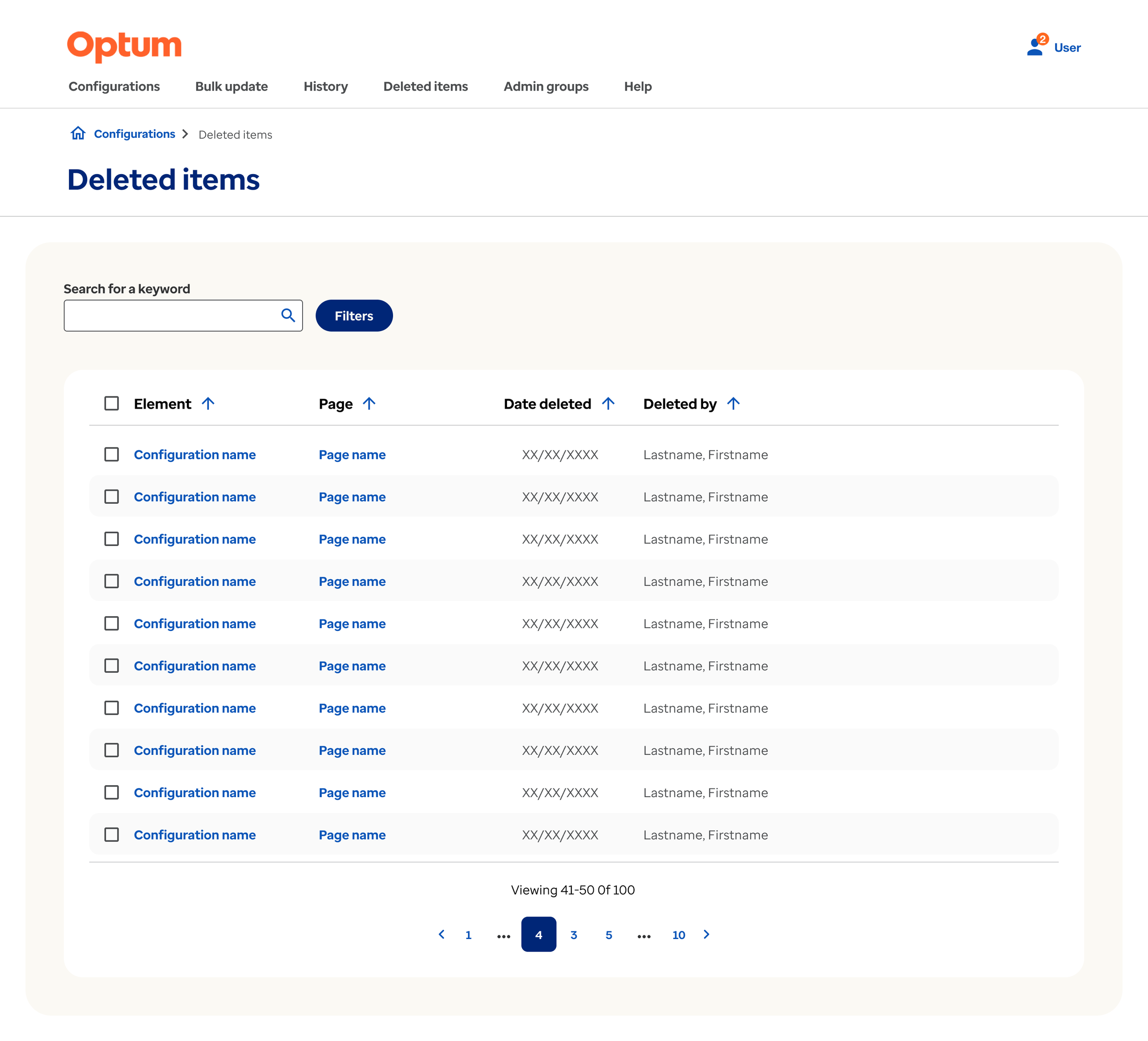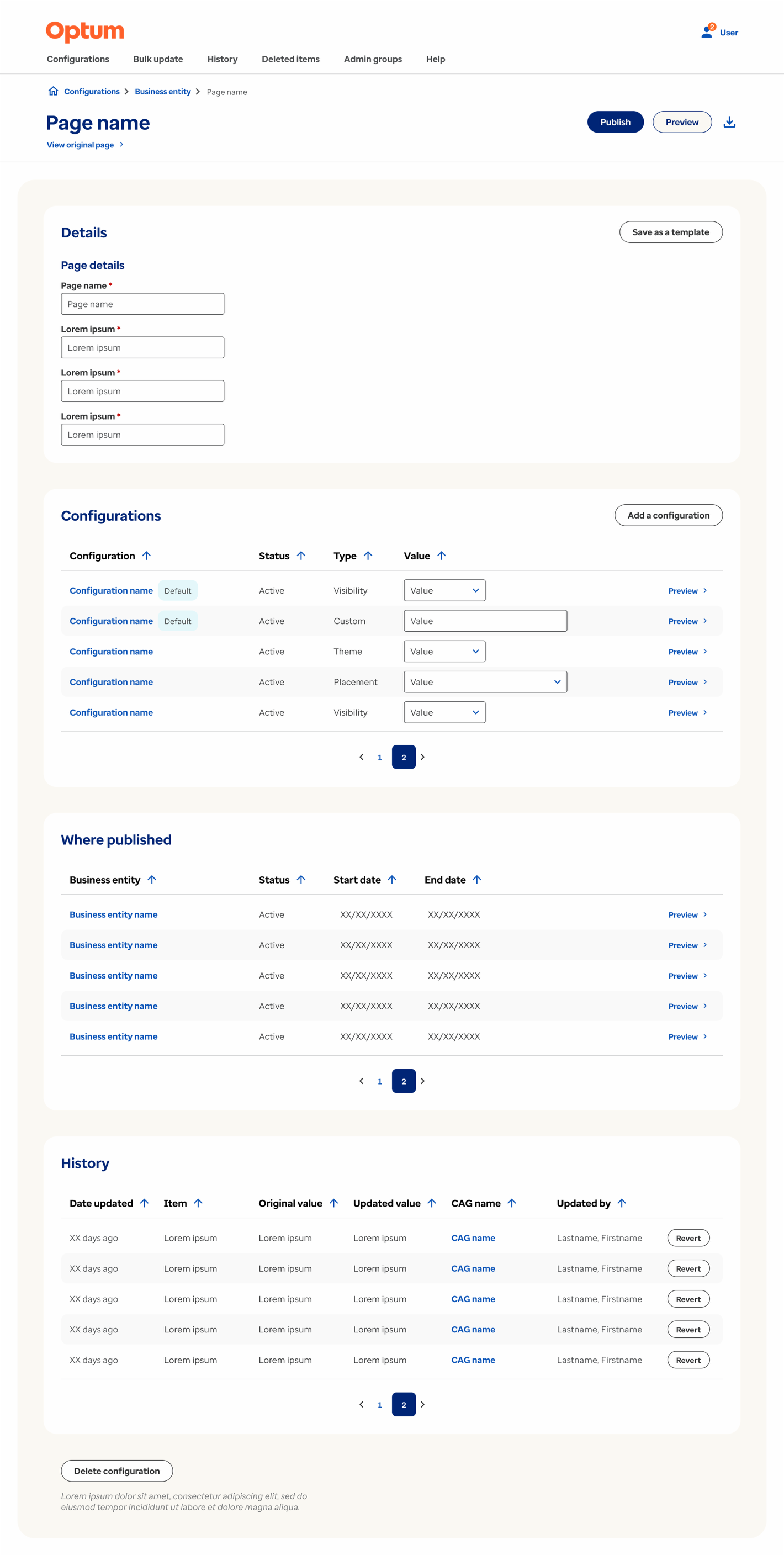Configuration as a Service
A net new product to help business segments update their site configurations with relevant content and structure. This allows internal teams to easily locate configurations and edit as desired.
Business analysts
What they do
Support business requests to set up various sites follow the asks of users
Edit and update existing configurations based on the incoming requests
Create new configurations
Their problem
Their process includes over 20 redundant applications
Have to locate configurations by scrolling through hundreds of configurations until they find the specific one of interest
Check edits by guessing random member logins to view and interact with updates
What they need
Structured refinement to help navigate specific configuration
Content presented in a format that matches how they understand and process information
A single application to consume data for different hierarchies
Detailed content to make fully informed decisions and actions
Empathizing with users
Understanding the business’s day-to-day tasks and empathizing with their frustrations is crucial to discover. During observational testing, the team completed various tasks, sharing issues, noting what they’d like to do, provided a collection pain points and direction.
Locating a configuration to view and edit is a daunting task as there is no structure to the records display, filtering, or orderly-naming process
The page structure of editing a configuration confusingly does not match the actual page receiving the edits
Users check their edits by guessing random member logins to view and interact with components
They rely on their own memory to complete informative actions and locate items which isn’t sustainable
Seamless process flows
It is important for users to efficiently complete requests to keep up in moments with demanding high volumes. Revisioning how a their tasks are accessed and completed brought clarity to their mental processing and ease to their experience.
User flows: The main tasks are mapped out to drive a new format with easy way-finding, automaton, and direct capabilities to preview edits in the same flow.
Advocating for the user
The pre-determined data structure was assumed to benefit users which in reality went against everything users needed to be successful. Redesigning the structure of data and advocating for user needs made it successful for users to think about data and to consume content in the way they want to make proper decisions and actions.
Refining configurations: New architecture appropriately coordinates with the hierarchy of components which supports the refinement options users need to accurately think through locating specific configurations. This also opens the opportunity for users to access any detail information about any component in the hierarchy to easily launch any use case.
Visualizing user thought-process
When beginning any task, users need to sift through hundreds of configurations. Users were held to search in a restrictive manner that didn’t reinforce their needs. In order to effectively locate a specific configuration, users need a surface that visually matches how they think and supports easy way-finding.
Config listings: Dashboard first lists exact configurations followed by related components in its hierarchy and additional assisting details to clearly distinguish items.
Search & filter: Open keyword search and reflective filters aids users to easily refine results based on the variables they’d map down through.
Supporting granular actions
There are many components and actions users need to perform at different moments. Expanding the site to create room for detail pages at each level of elements in the hierarchy allows users to view all details to accurately inform actions.
Site map: Created spaces to breakdown each level of components, its details, perform specific actions to it, view and navigate to its related components which enhanced the experience for new, custom opportunities.
Uninterrupted info gathering
Overtime, configurations are continuously created, edited, published, soft-deleted, etc. Users today are determining changes in a disconnected process to understand what occurred, what needs to be rebuilt, and how to execute. Recording the activity and storing it in one location creates uninterrupted clarity to past efforts and informs future actions.
History: A global log of the changes made within a team to track the movement between the collection of their configurations at once.
Deleted items: A point of reference for all the removed items tracked in one place for the user view and apply further actions as needed.
Educative component pages
Each component has its own set of detailed documentation that needs to be available for users to make informative decisions and perform as needed. Detail pages gives space for each component to relay defining information and provides insight for users.
Settings: Breakdown of the details that make up the component.
Child components: Listing the components that live under for clarity of items that will receive changes that will trickle down as edits are made.
Active use: Users can easily view where the component is actively published so clarify where their edits and actions are applied.
History: A defined record of past activity specific to the component with relative information to easily scan and understand changes over time.
Accomplishing user needs
Business analysts needed a space to locate and edit configurations in a way that makes sense to them without disruptions. Prioritizing the needs of users, this product supports their basics tasks with further expansions to provide organized pages with detailed information to give users full clarity on what they are viewing, make informed decisions, and recognize where their actions are impacted.









